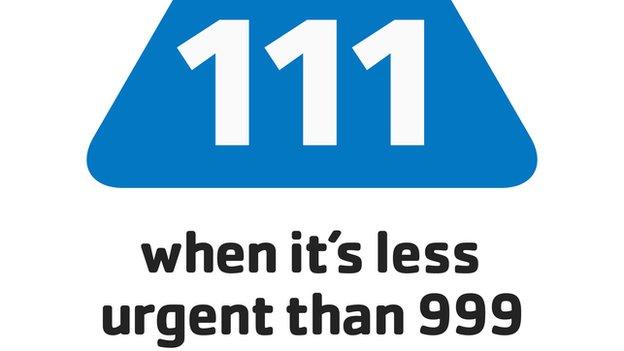Winter pressure - how helpful is NHS 111?
- Published

There's talk of unprecedented pressures, record levels of calls and a system which is "creaking"..
So what is happening in the NHS even before winter has fully taken a grip?
The answer is there is no single clear answer.
Experts point to a range of factors which have led to a sharp increase in calls to ambulance services and the number of emergency admissions at hospitals.
An increasing and ageing population and confusion about the availability of out of hours GP services have clearly played a part. But another intriguing explanation emerged today from a senior player in the world of Accident and Emergency - the NHS 111 service could be adding to the pressures.
Dr Clifford Mann, President of the College of Emergency Medicine, was speaking at a conference organised by the King's Fund think tank. I asked him for his views on the current high levels of demand.
He said the system was "working pretty well" in the face of the rising workload. But he raised questions about the role of the NHS 111 urgent care helpline.
'Less than urgent' calls
Dr Mann's point in essence was that people who called 111 were too often referred by operators to A&E units or to an ambulance service. The series of questions, he argued, provided responses which were too simplistic.
He added that this was not the fault of the 111 staff, rather it was the problem-solving "algorithms" that the call handlers use which might need to be adjusted. Others at the conference suggested that the full range of local options for patients, not involving hospital, were not always available to 111 operators.
Dr Mann later supplied me and other interested journalists with data he had prepared on the progress of 111. After the launch in the spring of 2013, there were problems extending the service across England. As the population covered grew, the number of referrals to ambulance services and A&E units rose even faster.
In December 2013, the population in England which could use NHS 111 was 55.6m. By May 2014, that had gone up to 56.9m. Over the same period, the number of dispatches of ambulances by 111 operators increased from just under 89,000 to more than 93,000. The number of patients recommended by 111 staff to go to A&E rose from about 53,500 to nearly 67,000.
What the data suggests, on this analysis, is that demand pressures were growing earlier this year, and that had something to do with 111 being rolled out nationally. What we don't have is any comparison with referrals under NHS Direct, a predecessor of 111. But Dr Mann's theory is certainly worthy of further debate.
- Published16 December 2014